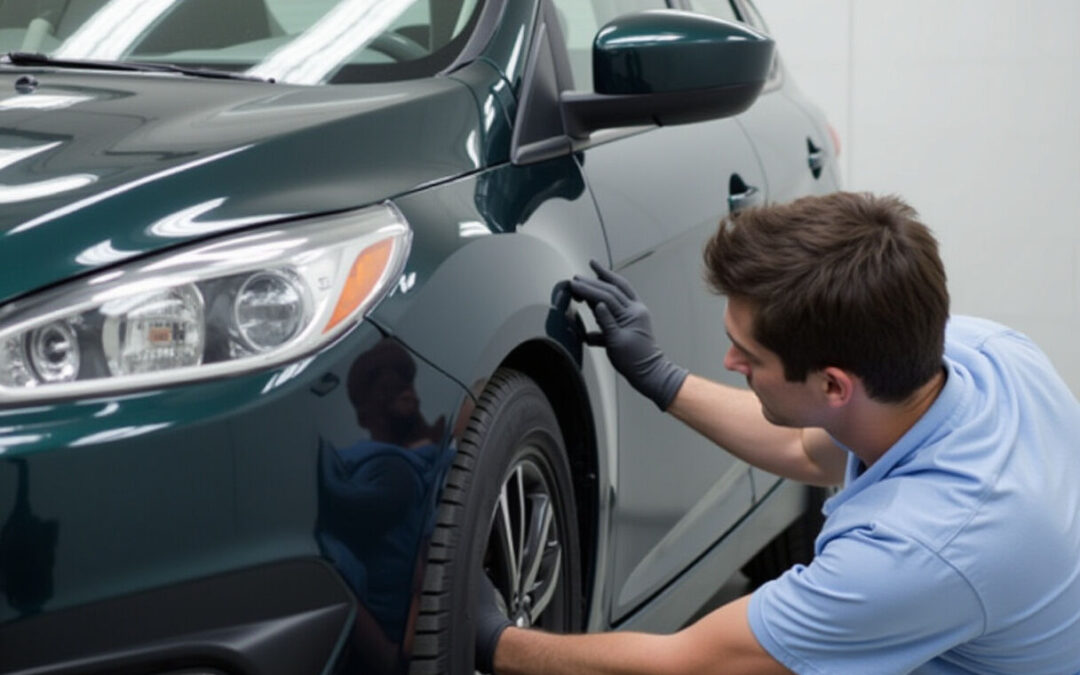Choosing The Right Protection…
For your vehicle’s paint is essential for maintaining its aesthetic appeal and resale value. With various options available, two of the most popular methods are paint protection film (PPF) and ceramic coating. Both offer unique benefits and drawbacks, making it crucial for car owners to understand which option suits their needs best. In this blog post, we will explore the differences between paint protection film and ceramic coating, focusing on their effectiveness, durability, maintenance requirements, and cost, specifically for residents for car paint protection Sanford.
1. What is Paint Protection Film (PPF)?
– Paint protection film, often referred to as PPF, is a transparent, thermoplastic urethane film applied to the exterior surfaces of vehicles to protect against scratches, chips, and other environmental damage.
– Its benefits include self-healing properties, which allow minor scratches to disappear over time, and its ability to provide a barrier against UV rays, road debris, and contaminants.
– The installation process typically requires professional help to ensure a seamless fit and optimal coverage.
2. What is Ceramic Coating?
– Ceramic coating is a liquid polymer applied to the exterior of a vehicle that chemically bonds with the factory paint, creating a durable layer of protection.
– It offers excellent hydrophobic properties, making it easier to clean the vehicle and helping to repel dirt, water, and grime.
– Unlike PPF, ceramic coating does not provide a physical barrier against impacts but enhances the vehicle’s shine and provides UV protection.
3. How do PPF and Ceramic Coating Compare in Terms of Durability?
– PPF is known for its durability against physical damage, such as rock chips and scratches, often lasting up to 10 years with proper care.
– Ceramic coating, on the other hand, offers long-lasting protection against environmental contaminants and UV rays, typically lasting between 2 to 5 years, depending on the quality of the product and maintenance.
– Both options require different maintenance routines to ensure longevity, with PPF needing periodic inspections for wear and ceramic coating requiring regular washing and occasional reapplication for optimal performance.
4. What Are the Maintenance Requirements for PPF and Ceramic Coating?
– Maintenance for PPF includes regular washing and potentially polishing to remove any surface contaminants. It’s also advisable to avoid automatic car washes that may damage the film.
– For ceramic coatings, the maintenance involves regular washing with pH-neutral soap and occasionally using a maintenance spray to restore hydrophobic properties.
– Understanding the maintenance needs is crucial for car owners in Sanford, as it directly impacts the longevity and effectiveness of the paint protection method chosen.
5. What Are the Cost Considerations for PPF and Ceramic Coating?
– The initial investment for paint protection film can be higher, often ranging from $500 to $2,000, depending on the coverage area and the quality of the film.
– Ceramic coatings generally have a lower upfront cost, ranging from $500 to $1,500, but may require periodic reapplication, which can add to the overall expense over time.
– Evaluating the long-term costs of each option is essential for car owners looking for effective automotive finish protection while staying within budget.
Conclusion
In conclusion, both paint protection film and ceramic coating offer valuable benefits for vehicle protection, but they cater to different needs and preferences. PPF excels in guarding against physical damage, while ceramic coating shines in providing a glossy finish and ease of maintenance. For residents in Sanford, understanding these distinctions can help in making an informed decision that best suits their vehicle protection needs, ensuring their cars remain in pristine condition for years to come.


Recent Comments